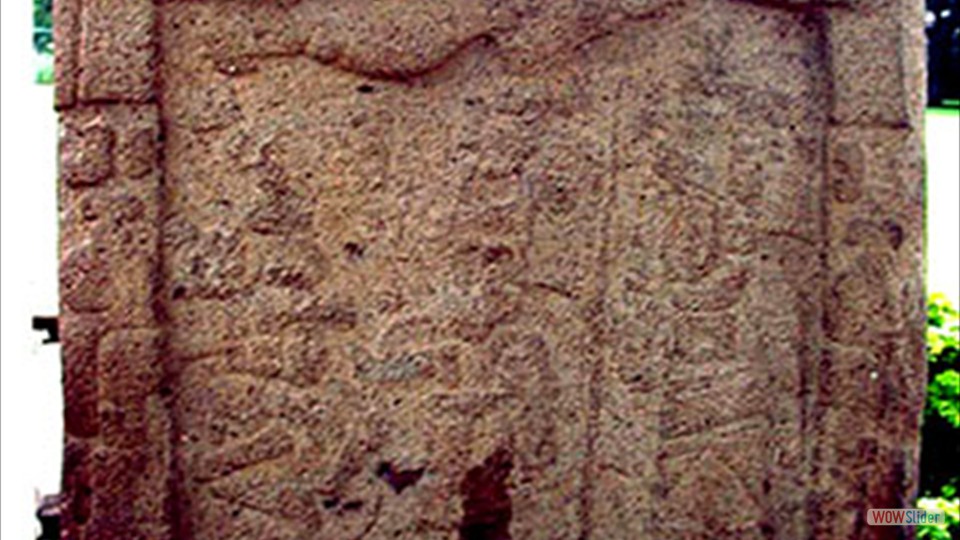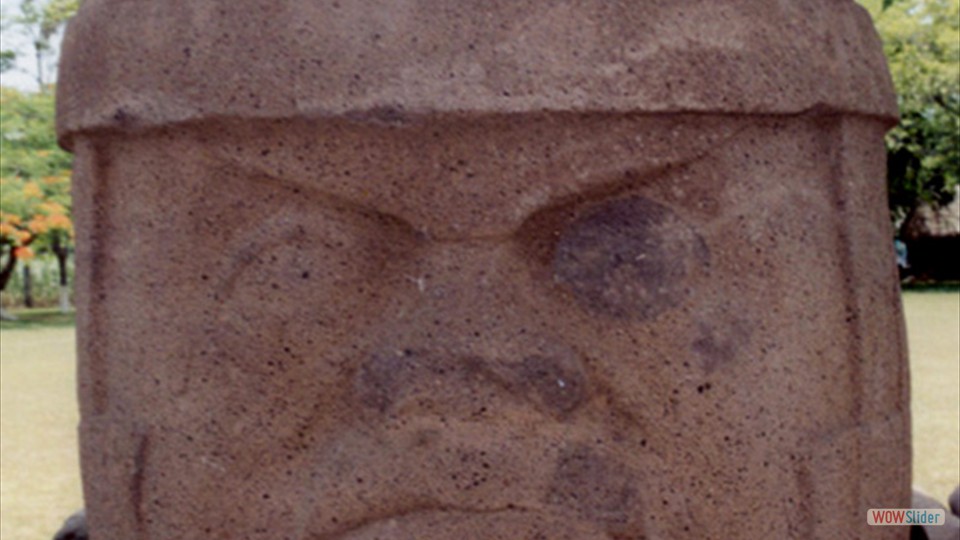Founded some time in the centuries before 1000 B.C.E.,Tres Zapotes emerged as a regional center early in the Middle Formative period, 900 - 800 B.C.E., roughly coinciding with the decline of San Lorenzo Tenochtitlan. The earliest public architecture yet detected has been dated to the end of the Middle Formative, 500 B.C.E..
It is thought that the two colossal heads date from this period. It was near Tres Zapotes that the first colossal head was discovered in 1862 by Jose Melgar. To date, two have been found locally, labeled "Monument A" and Monument Q". Smaller than the colossal heads at San Lorenzo, they measure slightly less than 1.5 m (4.5 feet) high. Together with the cruder and significantly larger head at Rancho la Cobata, these colossal heads show evidence of a local style of dress and sculpture, differing from that of San Lorenzo and La Venta. And, unlike the Olmec site of La Venta, Tres Zapotes was not abandoned at the close of the Middle Formative period, ca. 400 B.C.E., nor was it immediately affected by the folding of the Olmec culture in the eastern Olmec heartland. However, during the next several hundred years, the Olmec culture at Tres Zapotes and on the western edge of the Olmec heartland would be gradually transformed into what has come to be called the Epi-Olmec (or post-Olmec) culture.
The 2000 (actually almost 3000) -year existence of Tres Zapotes as a cultural center is unusual, if not unique, in Mesoamerica.





 1
1 2
2 3
3 4
4